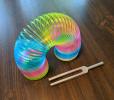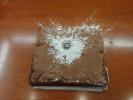-
About
- SPS Store
-
Programs & Resources
-
Awards
-
Scholarships
- AWIS Kirsten R. Lorentzen Award
- Aysen Tunca
- Future Teacher
- Herbert Levy Memorial
- Jocelyn Bell Burnell Outstanding Leadership Scholarship
- Leadership
- LLNL Scholarship
- Mary Beth Monroe
- Marian H. Rose Research Scholarship
- Peggy Dixon Two-Year
- SPS-Google
- SSAI Academic
- SSAI Underrepresented Student
- TEAM-UP Together
- Individual Awards
- Chapter Awards
- Award & Program Deadlines
- Access the Awards System
- Additional Opportunities
- Calendar
-
Scholarships
- Meetings
- Grad School & Career Resources
- Publications
- Sigma Pi Sigma










